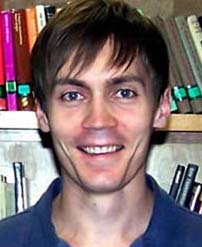2011-12-12
| Research Scientist Alexey Arefiev |
| The University of Texas at Austin |
| Time: 2:00 pm, December 12, 2011 |
| Place: Meeting Rm.,LLP |
Biography
Dr. Arefiev received his B.S. in physics (with Highest Honors) from Novosibirsk State University (Russia) in 1998. As an undergraduate student, he worked on physics of single species plasmas at the Budker Institute of Nuclear Physics (Novosibirsk, Russia). In 1999, Dr. Arefiev enrolled in the graduate program in physics at the University of Texas at Austin. His graduate work was supported by the Variable Specific Impulse Magnetoplasma Rocket (VASIMR) project (NASA Johnson Space Center), Institute for Fusion Studies, and Fusion Research Center. Dr. Arefiev received his Ph.D. from The University of Texas at Austin in 2002, and his thesis advisors were Dr. Boris Breizman and Prof. Roger Bengtson. His thesis was a first-principles theoretical analysis of a plasma thruster that modeled the helicon plasma source, single-pass radio frequency heating, and particle and momentum balance. In 2003 Dr. Arefiev was selected by the Division of Plasma Physics of the American Physical Society to receive the Marshall N. Rosenbluth Outstanding Doctoral Thesis Award. Dr. Arefiev joined the Institute for Fusion Studies in 2002. He collaborated with NASA and Ad Astra Rocket Company on the VASIMR project until 2007. His propulsion-related research included topics such as particle and power balance in magnetized plasma sources, self-consistent description of a super-Alfvénic plasma flow in a magnetic field (plasma detachment), and plasma expansion into a vacuum. Since 2002, Dr. Arefiev has also collaborated with the Center for High Intensity Laser Science at The University of Texas at Austin on problems of laser-target interactions. Specifically, Dr. Arefiev is engaged in studies of laser-irradiated micro-clusters and related phenomena such as fusion reactions from exploding clusters and harmonic generation. Abstract A new mechanism is presented that increases electron energy gain from a laser beam of ultra-relativistic intensity in underdense plasma. The increase occurs when the laser produces an ion channel that confines accelerated electrons. The frequency of electron oscillations across the channel is strongly modulated by the laser beam, which causes parametric amplification of the oscillations and enhances the electron energy gain. This mechanism has a threshold determined by a product of beam intensity and ion density. Current Research Area theoretical plasma physics, with focus on laser-plasma interactions, plasma kinetic effects, and plasma propulsion Selected Publications that are representative of Arefiev's work include 1."Collisionless plasma expansion into vacuum: two new twists on an old problem" Arefiev, a. V. and Breizman, B. N. Phys. Plasmas 16, 055707 (2009). 2.“Magnetic nozzle and plasma detachment model for a steady-state flow” Breizman, B. N.; Tushentsov, M. R.; and Arefiev, A. V. Phys. Plasmas 15, 057103 (2008). 3.“Ambipolar acceleration of ions in a magnetic nozzle” Arefiev, A. V. and Breizman, B. N. Phys. Plasmas 15, 042109 (2008). 4.“Ion acceleration by hot electrons in microclusters” Breizman, B. N. and Arefiev, A. V. Phys. Plasmas 14, 073105 (2007). 5.“Resonant power absorption in helicon plasma sources” Chen, G.; Arefiev, A. V.; Bengtson, R. D.; Breizman, B. N.; Lee, C. A.; and Raja, L. L. Phys. Plasmas 13, 123507 (2006). 6.“Propagation of radially localized helicon waves in longitudinally nonuniform plasmas” Arefiev, A. V. and Breizman, B. N. Phys. Plasmas 13, 062107 (2006). 7.“Nonlinear physics of laser-irradiated micro-clusters,” Breizman, B. N.; Arefiev, A. V.; and Fomits’kyi, M. V. Phys. Plasmas 12, 056706 (2005). 8.“Magnetohydrodynamic scenario of plasma detachment in a magnetic nozzle” Arefiev, A. V. and Breizman, B. N. Phys. Plasmas 12, 043504 (2005). 9.“Theoretical components of the VASIMR plasma propulsion concept” Arefiev, A. V. and Breizman, B. N. Phys. Plasmas 11, 2942 (2004). |